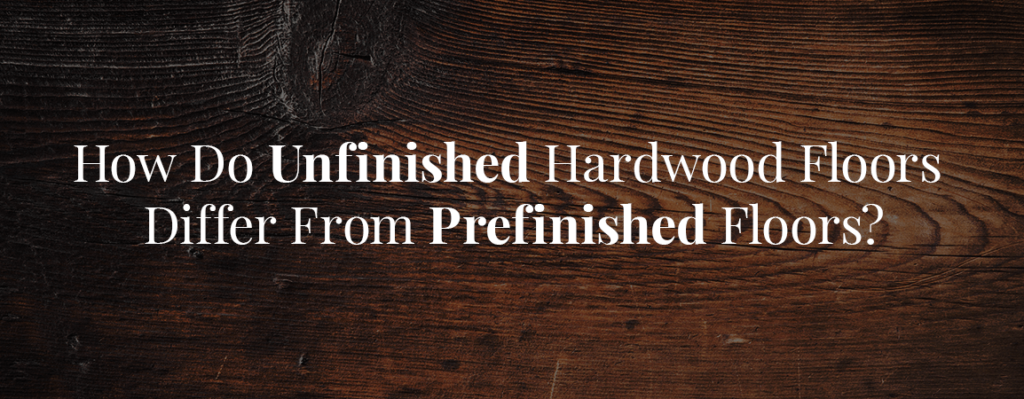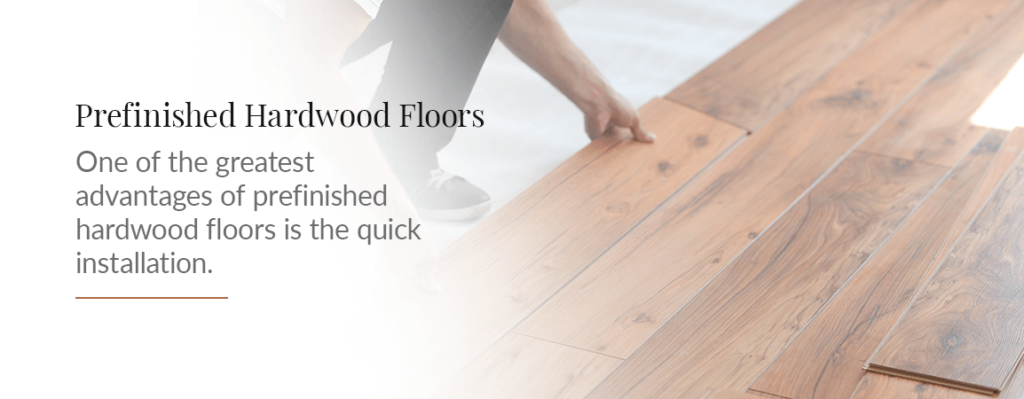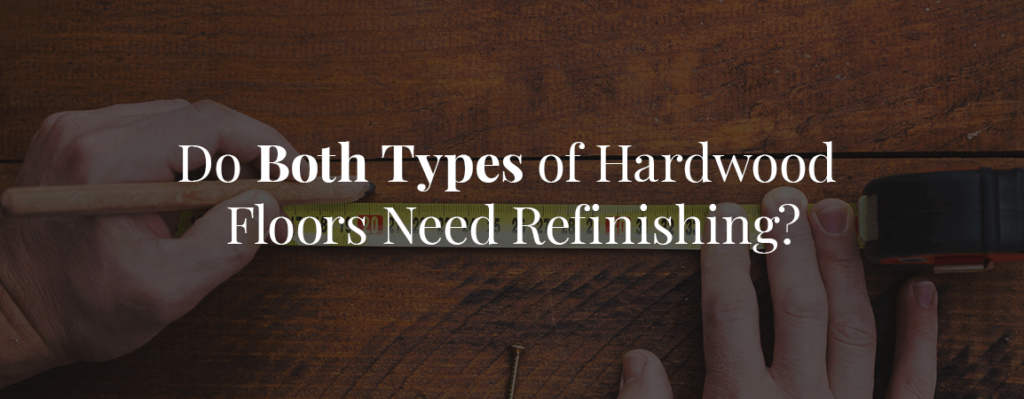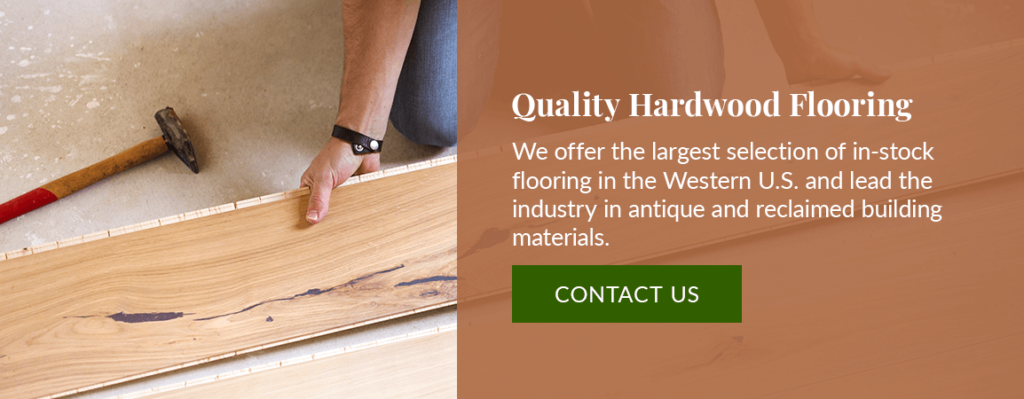If you’re trying to decide between unfinished and prefinished hardwood floors for your home, you’ll need to know the differences before making an informed choice. Learn about the advantages of prefinished vs. unfinished hardwood flooring below so you can manage your next flooring project with ease.
Benefits of Hardwood Floors
One of the most attractive benefits of hardwood floors is their cleanliness. Unlike carpet, hardwood floors don’t harbor harmful debris or dust. With a quick mop, sweep or vacuum, your floors will be clean immediately, along with your indoor air. Hardwood floors won’t trap pollen, animal dander or other allergens, allowing you to breathe more easily in your home and avoid allergic reactions.
Other advantages of hardwood floors include:
- Easy maintenance: If you like to keep a clean house, consider hardwood flooring. You can keep hardwood floors looking beautiful by occasionally sweeping and mopping as opposed to carpeting that holds more dirt and hidden dust mites.
- Beauty and versatility: Hardwood floors add an elegant, sophisticated look to every room and work well with any decor. This flooring’s versatility makes it one of the most common options for homeowners looking to upgrade their interiors.
- Durability: If your flooring doesn’t last, it doesn’t matter how attractive it is if it can’t fulfill its function. Luckily, as long as you properly maintain your hardwood floors, their beauty will last for many years. If you’re worried about your kids or pets scratching the floors, cover the flooring with area rugs and consider wood that has a higher hardness index level such as oak, hickory, or maple.
- Variety: Hardwood isn’t a one-size-fits-all flooring type — you can choose dark or light varieties with patterns, streaks and knots. You can easily find a type that perfectly suits your style.
- Better acoustics: You have no idea what sounds your flooring will make until you actually start walking on it. However, this is usually not a concern with hardwood flooring — quality flooring will allow for quieter movements with any annoying creaking.
- Longevity: We’ve seen properly maintained hardwood floors last over 100 years. Additionally, if you choose reclaimed wood, this typically extends the lifetime of the flooring as old-growth lumber tends to be more durable.
How Do Unfinished Hardwood Floors Differ From Prefinished Floors?

You know the benefits of hardwood flooring as a whole, but what are some of the primary differences between unfinished and prefinished floors?
Prefinished hardwood floors have already been sanded, stained and coated with polyurethane in a factory. The only thing your floor installer has to do is cut the pieces to the appropriate lengths and fasten them to your subfloor. Unfinished hardwood, on the other hand, is raw wood that must be installed first. Then, it must be sanded and refinished on-site.
Prefinished floors are factory-finished, which means each board has been individually finished using sprayed-on polyurethane coats. Then, the boards are baked in an oven using aluminum oxide, creating an exceptionally durable acrylic finish. Many times the edges are slightly beveled.
In contrast, unfinished hardwood floors consist of raw wood that typically has been tongue and grooved and rough planed. With this option, you can choose the finish of your choice. Typically the groves are less beveled and can be sanded flat.
Prefinished vs. Unfinished Hardwood Floor Costs
Regarding the material itself, prefinished flooring is more expensive than its unfinished counterpart. However, after the overall installation, prefinished flooring tends to be comparable in price. Prefinished floors don’t involve long hours of on-site labor after being laid, as no sanding or application processes are involved. In some instances, the labor expenses required for unfinished flooring can be several times the cost of the flooring itself.
Advantages of Prefinished Hardwood Floors

One of the greatest advantages of prefinished hardwood floors is the quick installation. Without your installers needing to sand or finish the wood, they can complete the entire floor installation much more quickly. Furthermore, after the floor has been installed, you can use it right away. Homeowners can move back into their homes immediately without worrying about the finish curing.
Other advantages include:
- Durable wear layer: The finish used on prefinished wood tends to be more durable than most types applied to a hardwood floor that’s finished on-site. Manufacturers often apply UV-cured finishes to their floors, making the flooring exceptionally durable.
- Board uniformity: Prefinished boards have more uniform coloring and staining than their unfinished counterparts. This is because they’re stained and finished in a controlled environment.
Advantages of Unfinished Hardwood Floors
Many homeowners prefer the look of unfinished hardwood because it has a more distinct real wood look that people think of compared to prefinished hardwood flooring, even though both are real hardwoods.
Unfinished hardwood that has been finished by a qualified professional can look stunning. And it’s possible to be done by experienced DIYers to save on labor costs. To many homeowners, nothing can rival the beauty and natural warmth of hardwood floors finished by professional craftworkers.
Some other advantages of unfinished hardwood floors include:
- Variety of finish options: When you opt for unfinished floors, your possibilities are nearly endless. From the many species of available wood to the nearly countless number of stain colors and finish options, the looks you can achieve are virtually unlimited. With unfinished hardwood flooring, you can also do several creative effects that aren’t always usable with prefinished flooring, including a green or blue floor, a French bleed or a wire-brushed or hand-scraped floor. If you choose prefinished, you will have fewer wood species, colors and finishes to choose from.
- Easy to match your home’s existing flooring: If you’d like to match existing flooring in your home, you can achieve this most easily with unfinished wood flooring. You can choose the exact species of wood and have a professional experiment with stains and colors to coordinate it with the look of your existing flooring.
- Uniformity of stain color: If you have prefinished flooring with a dark stain, the stain will only be on the faces of the boards. Due to the boards’ beveled edges, the lighter portion of the wood underneath can be seen along the edges when looking at your floor from far away. In contrast, when you install and finish unfinished hardwood on-site, the wood appears uniform and smooth and the stain is applied to all visible areas.
- Ease of cleaning: Unfinished wood flooring can be easier to clean because it lies completely flat rather than being a bit elevated because of beveled edges, as it doesn’t have this feature.
- Wide style availability: Prefinished solid floors are popular, but you may have to look a bit harder for varied or specific options. These floors offer various widths, samples, face treatments and profiles, but mills will only inventory products that sell. If you want a specific width, sawn profile, wood species and color, you may have more freedom in your choices when you select an unfinished solid floor.
Additionally, consider the refinishing process for both wood types. Both unfinished and prefinished flooring will eventually get some scratches on their surfaces due to normal wear and tear. If you have unfinished flooring installed then treated with an oil- or water-based polyurethane, you can buff and recoat it every couple of years to revitalize the polyurethane top coat and remove the scratches on the surface. If you take good care of your hardwood floor and repeat this process every several years, you will prolong the need for a complete sanding down the road.
This buff and coat process is not available for prefinished flooring. Prefinished flooring must be sanded down to the raw wood, but because of the many polyurethane coats that are applied in the factory, you will need to sand deeper into the wood’s material than you would with a hardwood floor that’s sanded and treated on-site.
This consideration means prefinished floors cannot be sanded as many times as unfinished floors without them becoming too thin for repeated sanding. If you want the option to sand your floor more as needed, unfinished flooring could be the more appropriate choice for your home.
Prefinished Hardwood Floor Installation
In many ways, installing prefinished hardwood flooring is similar to installing unfinished hardwood. Both require specific tools, including power floor nailers and pneumatic staplers. Installers will usually fasten hardwood flooring to the subfloor by utilizing finishing nails or staples. Finishing nails are hammered down at an angle along the planks’ edges or tongues.
This type of installation is more involved than the glue-down methods occasionally used for engineered hardwood flooring, which is why most people have professionals install their prefinished hardwood floors for the best outcome. Some people may try to install flooring themselves if they are good at do-it-yourself projects, but it’s often advisable to seek help from a trained professional with bigger and more complex installs like this to ensure the process goes as intended. Additionally, you get an added advantage in that installation only requires one session.
Installing prefinished hardwood has other notable advantages, including that there is no need to sand, stain or varnish it on-site. Sanding is messy and will fill the room with dust, which then requires a thorough cleaning, but this won’t be an issue with prefinished hardwood. You also won’t have to wait hours or even days for your hardwood floor’s finish to dry, meaning you can begin using it sooner after the project is complete.
Unfinished Hardwood Floor Installation
With a floor finished on-site, the wood is installed and sanded flat. This process lets you remove any irregularities in height, which may exist because of an uneven subfloor. In contrast to the standard micro-beveled edges of prefinished flooring, you can accommodate numerous edge profiles with unfinished hardwood.
This capability lets you have a bit more flexibility in how your flooring looks and customize it to your desired appearance, especially if you’re aiming to match new flooring to any existing flooring. When applying a new finish to existing flooring, it can be common to encounter issues with the new finish beading up and not sticking to the wood. Unfinished hardwood planks avoid this because you start with the raw wood and don’t have to work with a pre-existing finish.
Choose from a wide range of stains when having your unfinished wood flooring installed, or coat with an oil to give the wood a more as-is, rustic look. Once the planks have been installed and sanded, your installer will finish them by applying your chosen stain — if you have selected one — and sealing the wood.
Do Both Types of Hardwood Floors Need Refinishing?

How often your unfinished hardwood floors must be refinished depends on their age and thickness. Before you begin this project, however, we recommend you refer to your manufacturer’s instructions. Solid hardwood planks with a thickness of at least 3/4 inches, for example, will probably require refinishing between four and six times over the course of their life span. If your hardwood is exceptionally thin, like 1/4 inches, you should avoid refinishing as it could strip away the floor to levels too thin.
If you don’t know the thickness of your hardwood flooring, you can measure it by taking out an air vent in your floor, exposing the boards’ side view. You could also remove the shoe base, base trim or quarter round, which will require a little more effort. Generally, you can get a good idea of how thick your flooring is without tearing up all your floors, which is more efficient and preserves the look of your interior.
If your hardwood floors are fading or have scratches or discolorations, this is another indicator that they need refinishing. The longer you have hardwood flooring, the more critical it is to perform preventative maintenance.
As for prefinished wood flooring, this type can technically be refinished, but the results will be different compared to a factory finish. For example, characteristic surface textures such as wire brushing, distressing and hand-scraping will be lost. This happens because your floor must be sanded down past the original coating to remove the aluminum oxide urethane layer. Additionally, choose your stain carefully when selecting prefinished flooring, as the color could become uneven once the floor is sanded again.
Contact Superior Hardwoods of Montana for Quality Hardwood Flooring
Established in 1977, Superior Hardwoods of Montana is a lumber company that provides one-of-a-kind building materials – reclaimed, unfinished and pre-finished, some of the finest wide plank flooring options on the market. We offer the largest selection of in-stock flooring in the Western U.S. and lead the industry in antique and reclaimed building materials, bringing you the nostalgia of well-made, rustic wood materials.
Whether you’re looking for reclaimed antique lumber beams, siding or hardwood flooring, you’re bound to find products you like when browsing our brochure or looking through our on-site options. If you have any questions about our products, feel free to reach out using our contact form or by calling (406) 251-2272.
